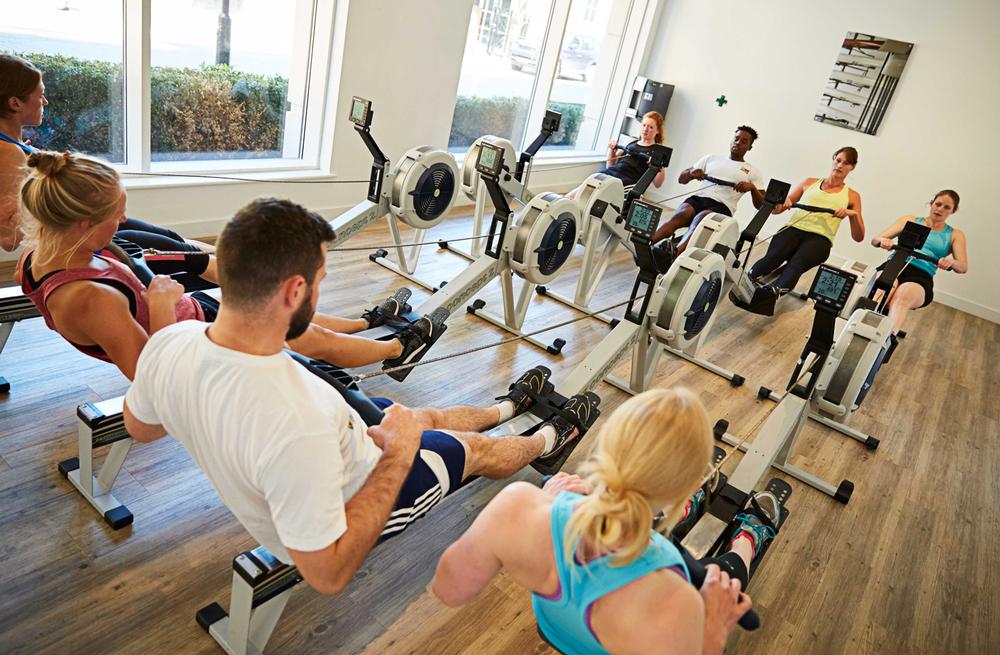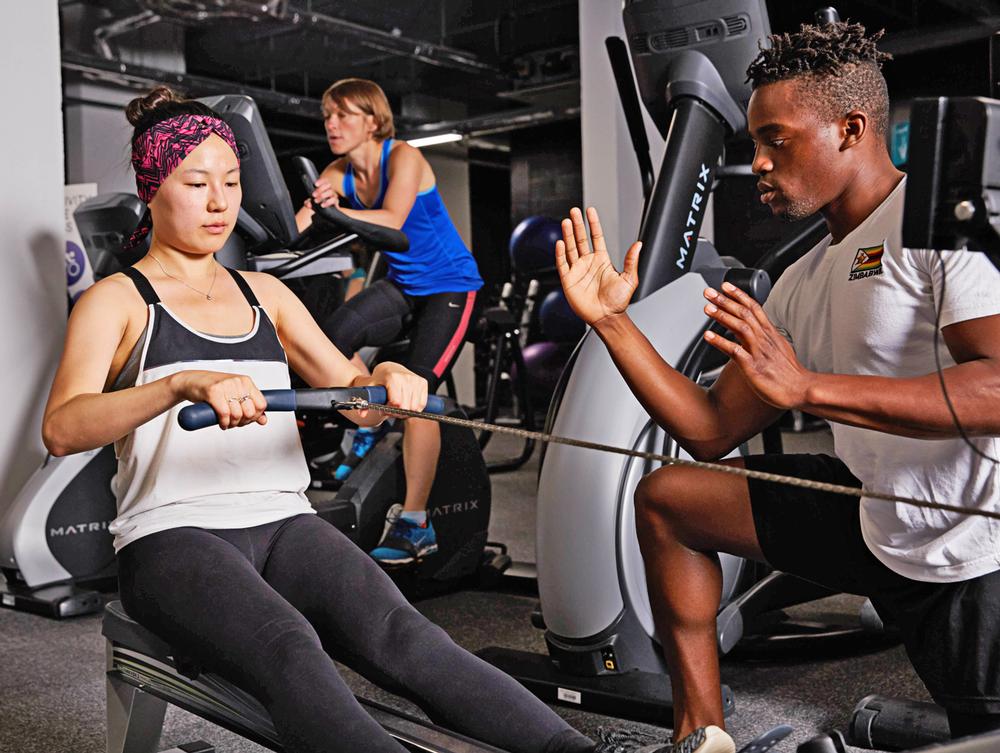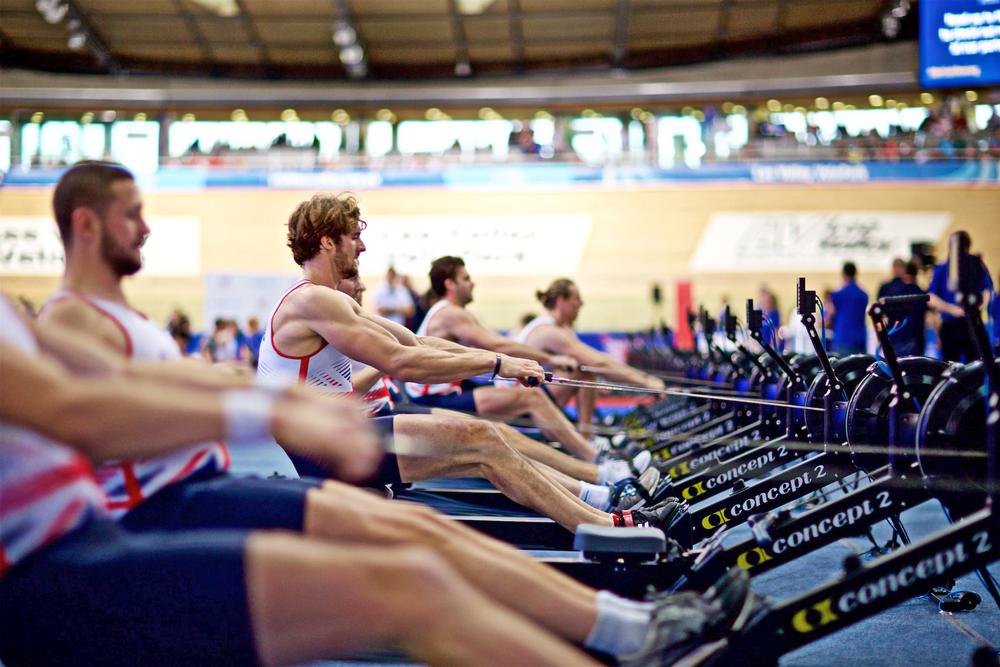Why is indoor rowing such a beneficial form of training?
The physical benefits of rowing are exactly the same whether you row on water or indoors, which is why all our elite rowers train extensively on indoor rowing machines.
Indoor rowing requires you to use between 85 and 90 per cent of muscle groups in your body and can provide a great CV workout for all ages, abilities, body types and fitness levels. It’s also great for core strength and flexibility and is a highly efficient fat-burning exercise – burning upwards of 300 calories per 30 minutes of rowing. Because it’s also low impact, it’s perfect for cross training, injury prevention and rehabilitation, as well as those who are new to exercise.
Rowing is quite technical, so is there a risk of injury?
It’s actually really easy to learn the basics of good technique – even a simple 10-minute introduction can make all the difference to the quality and enjoyment of your rowing workout. The risk of injury is no higher than other exercises and can be avoided with good technique.
Unfortunately, most gym-goers aren’t taught about correct technique and posture, as the number of instructors who have this knowledge is limited. This is one of the reasons we launched Go Row Indoor. A key part of this programme is educating exercise professionals and gym-goers in the correct technique to help them get the most out of indoor rowing.
Simple changes make all the difference. For example, when you get onto the machine, changing the height of the monitor to eye level and adjusting the positioning of your feet helps you improve posture, sit more comfortably and get a good starting position.
During the rowing stroke, the focus should be on your legs, not arms, and it’s also important to guide the handle to the bottom rib and maintain a straight back.
It’s a tough CV workout, which can put less fit people off. What can we do about this?
Again, I think this is largely down to a lack of education. People aren’t taught the basics of how to use a rowing machine or what a good workout looks like, so they tend to jump on the machine and go hell for leather for a short period of time.
Indoor rowing can actually be really easily tailored to an individual’s objectives and fitness levels. It’s the same as when you start running – you want to start slowly, focus on technique and gradually build your pace and distance. Beginners wouldn’t sprint straight away or run a half-marathon. It’s no different with rowing.
Tell us about Go Row Indoor
We would love all indoor rowers to also have the opportunity to try rowing on the water, but we know this isn’t always possible. Go Row Indoor therefore focuses purely on the fitness market, with two key aims: to improve the quality of the indoor rowing experience, and to increase participation by making it more accessible.
Our research shows that gym-goers lack confidence regarding rowing technique, and that this is a key barrier to their participation and enjoyment of indoor rowing. Educating fitness professionals in good technique, the benefits of indoor rowing and how to achieve an effective, efficient and enjoyable workout therefore lie at the heart of the programme.
We’ve just developed new class models for gym and studio, which are accredited by REPs and require trainers to be a minimum Level 2 fitness instructor; we’ve appointed five master trainers to deliver tailored training programmes to operators. We’re also developing other products to support those taking up indoor rowing, including a new website, tracker app and challenge-focused apps, training plans and events.
We want to encourage PTs and other exercise professionals to use the rowing machines in their gyms, whether as part of inductions, within bespoke client training programmes, or in the form of group classes.
How can gyms offer group exercise classes in rowing?
We’ve combined our world-leading knowledge of rowing with learnings from the boutique indoor rowing class market in New York to create a unique UK offering. This includes specially designed group classes.
The 45-minute studio format is set to music and combines rowing with circuit-based exercises. The 20- and 30-minute formats are HIIT style classes, requiring six to eight machines, which can be delivered on the gym floor without having to move the rowing machines.
All the classes have been designed to offer a fun and social workout, providing a more engaging indoor rowing experience.
You’ve already done a pilot with Pure Gym. How did this go?
Last year, we trained around 10 of Pure Gym’s London-based instructors, and a number of their sites are now piloting the classes. The feedback has been very positive, with good attendance levels, and we’ve used all feedback to further refine our training.
Going forward, all instructors who attend our workshops will continue to receive updated information on the programme, including new workouts and class models, as well as other resources such as workout videos and training plans. Operators will also be able to access branded materials to support the marketing of their indoor rowing activities.
For more information, visit www.britishrowing.org/indoor-rowing























































